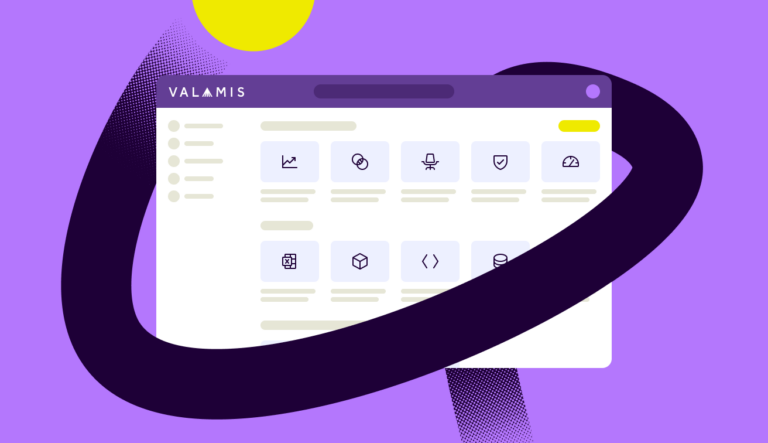Adult learning principles
Adult learning theories help organizations to improve their training programs. This article examines those theories, guiding you on how to use them in your training programs.

To effectively transmit information within an organization, either through a dedicated training program or a more general organizational learning effort, adult learning principles should be utilized.
Adults learn differently than children, and organizations that successfully implement these principles will reap the benefits of a well-informed workforce.
Alongside these principles, there are various adult learning theories that can help organizations improve their training programs. This article was written based on those theories, and will help you understand how to use them in your organization’s training programs.
8 Adult learning principles:
- Adults have a higher sense of self-direction and motivation
- Adults use their life experience to facilitate learning
- Adults are focused on achieving goals
- Adults need to know how the information is relevant
- Adults are practical
- Adults are looking for help and mentorship
- Adults are open for modern ways of learning
- Adults want to choose how they learn
Adult learning principles
When creating any sort of learning program for an organization, these principles should be kept in mind, and learning resources should be developed using them.
1. Adults have a higher sense of self-direction and motivation
Adult learners are much more self-directed and motivated than young learners.
Adults tend to learn because they want to or they see the direct benefit of learning, rather than because they are told to or are expected to. However, just because adults have a larger reservoir of motivation, it doesn’t mean that they will learn just anything.
Adults have to see the benefit, value and purpose of learning.
Learning programs should clearly demonstrate what the learner gains from their interaction, or learners will be quick to disengage. Show the value of the content, and learners will be much more likely to engage with it.
How can you use this in your training?
You can follow the principles of Self-directed Learning theory, and allow your employees to drive their own learning journey. Employees can be encouraged to identify their own learning needs, plot how to achieve their goals, find resources, then assess their own progress.
Online learning is an ideal environment for this type of learning, and gives employees the ability to follow flexible learning paths, access to services that curate and recommend learning content to prevent skill gaps, and AI that is developed to deliver content tailored for each individual’s needs.
Tips for using this principle:
- Use learning outcomes to demonstrate the value and benefits of the learning material.
- Curate learning paths that are tailored to your company, to better serve learners.
- Make accessing knowledge simple, to help employees get started.
2. Adults use their life experience to facilitate learning
Adults, of course, have more experience than children.
Adult learners rely heavily on their experiences when they engage in learning, and they benefit from training programs that understand this.
Content that draws from real-world examples, relatable scenarios and builds on direct experience will lead to a more meaningful understanding of the subject.
Although using existing experience can help adults more quickly understand new information, there is a downside. The experience that learners draw from might be outdated, incorrect, biased, or incomplete.
Learners should be aware of these common challenges and know how to guide themselves to new conclusions. Understanding how to search for resources, expert opinions, proven data and relevant publications is a key skill that an adult learner will need to use.
How can you use this in your training?
You can take advantage of this learning principle using Social Learning Theory. This theory states that learners will combine their own experiences and observations to gain a more full understanding of concepts. Training provided through an online learning platform can deliver personalized learning materials based on an individual’s previous experience using AI algorithms.
Tips for using this principle:
- Provide bias training, to help learners understand how to acquire new information that might be at odds with their previous experience.
- Develop training materials that draw heavily on scenarios that learners will face in their day-to-day roles.
3. Adults are focused on achieving goals
Adults enter the learning process focused on results. They need to know how the information will help them achieve their goals, whether personal or professional.
In designing learning programs, instructors need to keep this in mind and make sure that the learner is given plenty of tools and information that will help them reach their goal.
The learner, however, also plays an essential role in this. They need to set clear, achievable goals for themselves, and be driven to engage with the content to reach their goals.
Adult learners will be energized and motivated when they see how the content they are engaging with will help them reach their goals. This energy can be harnessed and used to drive the learning process, leading to better results.

Build a learning culture: a practical workbook for your organization
Upgrade your organization’s learning culture with clear, actionable strategies to address the challenges.
Download workbookHow can you use this in your training?
With Project-based Learning, you can take advantage of this need to reach goals. Giving a group of learners a recognizable, achievable goal in the form of a problem that they must solve, you will be able to encourage the development of knowledge, skills, and teamwork.
This can be done in many formats, but an increasing number of organizations are turning to gamification in online training to encourage project-based learning. Learners are motivated to engage with leaderboards, weekly goals and other ongoing challenges.
Other organizations use learning paths, which are made up of various stages, each with a goal that the learner must meet and an evaluation that must occur before the learner can progress to the next stage.
Tips for using this principle:
- Teach learners the SMART method of goal setting.
- Ensure that the information provided is relevant to the learner’s current role and work-related challenges.
- Clearly show the value of the information. When a learner can instantly see this, they will apply it to real-life problems instantly and they will learn faster.
4. Adults need to know how the information is relevant
To properly engage a learner, the relevancy of the information within the training program must be highlighted.
So, both the immediate, short-term relevancy and the long-term benefits of engaging with the content should be highlighted in such a way that the learner will immediately dedicate themselves to learning.
For example, if a training program is being developed to upskill managers, the short-term relevancy might be that they will better understand core leadership principles. The long-term benefit is that they will become a more skilled leader, and be better able to reach departmental goals.
The short-term relevancy will demonstrate what they will learn in the course that is pertinent to their role. The long-term benefit is how that knowledge will make them better at their role.
While some learners might enjoy learning for the sheer joy of knowing something new, adults are far more likely to engage with learning that shows a clear relevance for them, whether it is something related to their goals, role, job or hobbies.
How can you use this in your training?
The principles of Andragogy would work well in this case. Using Andragogy, a learning environment can be developed to provide learners with the relevant information needed for their learning path, taking advantage of tools such as courses, videos, or apps.
All of these tools demonstrate the relevance and need for the information contained in the learning activity, using real-world examples and exercises to develop understanding. The learning environment can be tailored for each person, providing materials related to their role and department.
Tips for using this principle:
- For all types of learning content, demonstrate both short and long-term benefits to learners.
- Provide many types of content, allowing learners to engage with the types they feel most relevant for them.
- Relate materials to each role by tailoring the learning path.
5. Adults are practical
When developing a training program, keep in mind that the knowledge gained should be applied immediately.
Adults learn quickly and remember what they learn when they can turn around and apply that knowledge in their role.
Learning materials should be constructed with practical examples, using real-world scenarios and problem-solving that requires learners to access their experience and knowledge.
Allow learners to set their pace, and allow them to forge their own path. Online learning is well suited for this type of learning, as learners can access learning content on their own schedule.
This type of knowledge acquisition will ensure that the learner remembers the content much more fully than with more static methods.
How can you use this in your training?
This concept works well with Experiential learning, a learning theory that prizes hands-on learning and the use of experiences to ensure that knowledge is gained in a complete fashion.
An organization can create learning experiences centered on the knowledge that they wish learners to gain in a variety of manners.
VR training is fast gaining popularity in this area, as it can be much cheaper to develop experiential learning through VR than setting up real-world simulations.
Some companies prefer to develop role-playing games that lead individuals through the multitude of decisions that they need to make in their role every day, showing the consequences if a bad decision is made. In any case, an organization should connect learning to real-world applications and give learners the opportunity to quickly apply new knowledge in their roles.
Tips for using this principle:
- Focus on delivering knowledge that can quickly be applied in the learner’s day-to-day role.
- Set aside time after knowledge acquisition for learners to practice their new skills.
6. Adults are looking for help and mentorship
Adult learners understand that looking to an experienced role model will help them in their learning journey.
As an organization develops it’s training program, creating opportunities for mentorship can add a great amount of value for both the mentor and mentee and has the added bonus of developing relationships within and across teams.
Learning by example is a powerful way of accessing new knowledge, allowing learners to quickly gain information and simultaneously avoiding common mistakes.
How can you use this in your training?
This concept draws from Social Learning Theory. This theory states that learners will gain information by combining their own experiences with observations of the rewards and punishments that others receive for their actions, and that they will imitate the behavior of those they respect.
An organization can create a mentorship program, in person or online, pairing younger workers with more experienced role models. Online seminars and workshops can allow colleagues in different offices to share their wisdom and connect with each other.
Tips for using this principle:
- Develop ways to connect learners with mentors within the organization.
- Set up seminars, online or in person, to provide learning opportunities across departments.
- Create a culture of learning and knowledge sharing throughout the organization.
7. Adults are open for modern ways of learning
Adults are flexible when it comes to how they engage with knowledge. They understand that it can be gained in a variety of different ways, and are willing to try new formats.
By offering a variety of sources and options, an organization can ensure that all learners have access to learning content that engages them.
When developing a training program, an organization should provide many types of content, such as online courses, blogs, YouTube videos, webinars, apps, and conferences.
How can you use this in your training?
An organization can use the theory of Constructivism when developing training in this area. It is the theory that learners create their own meaning when learning, serving as the engine behind their own knowledge development by linking old information to new and then contextualizing it.
By offering a variety of learning paths, with different formats, a learner is able to acquire knowledge in a wide variety of manners and successfully contextualize it.
Tips for using this principle:
- Be flexible about learning, it doesn’t only happen in a classroom! Look for new ways to transmit information.
- Remember that people learn differently, and provide many ways to access knowledge.
8. Adults want to choose how they learn
Adult learners respond positively to self-directed learning.
Being able to control how and when they learn means that they are more likely to be fully engaged with the content, rather than simply going through the motions of learning.
Organizations should build their training programs in such a way that they grant learners an ownership stake in what they are learning. In doing so, they will find that the learners will give more effort into exercises, offer relevant feedback, and will be active learners.
This can be done by allowing learners to choose their learning path in an online training platform, or granting access to learning resources for learners to engage with at their own discretion.
The more that the learner is involved, from the planning stages to evaluation to feedback, the more onboard they will be with the entire process. Adult learners will respond negatively to being treated like a child, and with good reason.
How can you use this in your training?
Action Learning theory would be a good fit for this principle, as it allows learners to have control over their learning process. Using action learning, a group or person is asked to solve a problem while simplifying the solution.
Through a process of asking questions, reflection and then action, learners will explore the subject and gain knowledge through doing so. Once the process is complete, more reflection will allow learners to understand how they could do better next time.
Tips for using this principle:
- Build training programs that give learners many options for engaging with information.
- Allow learners to set their own pace and goals, and provide opportunities for them to give feedback about their experience.




